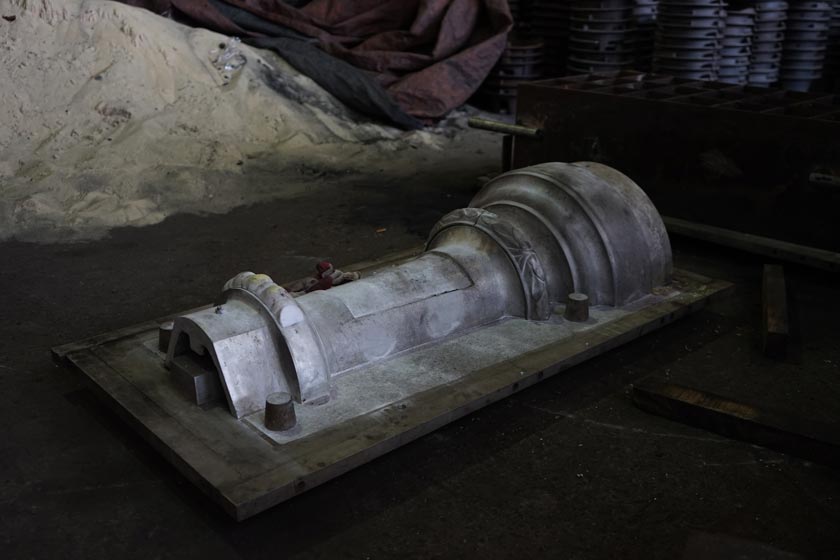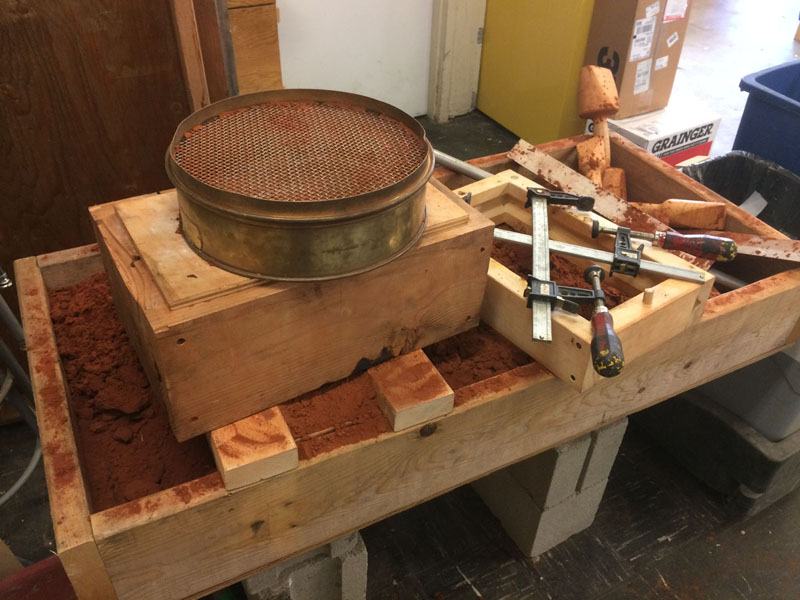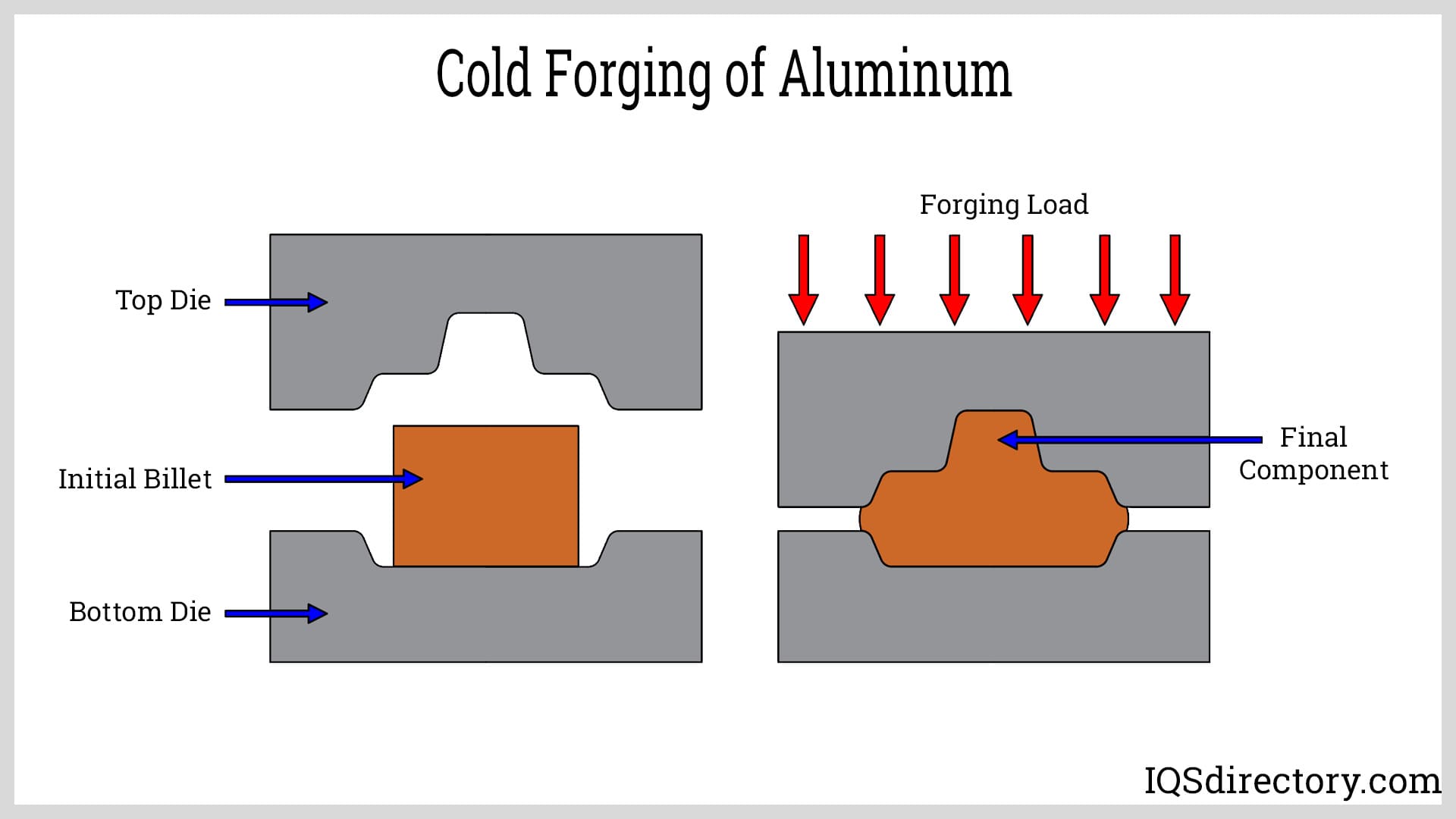Uncovering what makes Aluminum Foundry Wisconsin important in casting
Wiki Article
Exactly How Aluminum Foundry Contributes to Improvements in Aerospace Design
Aluminum factories are important to developments in aerospace design. They create lightweight, high-strength parts that are vital for modern aircraft. Through innovative casting methods, these shops develop intricate geometries that enhance structural honesty. Additionally, the advancement of premium Aluminum alloys supports the market's concentrate on fuel performance and sustainability. Difficulties continue to be in the manufacturing procedure. Recognizing these factors reveals the extensive impact of Aluminum on aeronautics's future.The Significance of Lightweight Products in Aerospace Style
As the aerospace market continues to develop, the value of light-weight materials becomes significantly obvious. The demand for efficiency and sustainability drives designers to focus on using materials that decrease general weight without compromising architectural integrity. Lightweight products, specifically Aluminum, play an essential function in improving fuel effectiveness, boosting payload ability, and increasing the overall efficiency of aircraft.The combination of these materials allows for innovative layouts, making it possible for manufacturers to develop more wind resistant shapes that can endure severe problems. The reduction in weight not just lowers functional expenses yet likewise contributes to a reduced ecological impact, straightening with international efforts towards sustainability in air travel.
Advanced Casting Techniques in Aluminum Foundries
Advanced spreading methods in Aluminum foundries play a vital function in aerospace design by allowing the production of precise and light-weight components. Advancements in mold and mildew layout and precision spreading procedures are vital in attaining optimal performance and structural honesty. Furthermore, the growth of light-weight alloys improves the total performance and efficiency of aerospace applications.Cutting-edge Mold Layout
Ingenious mold and mildew layout plays a crucial function in the performance and efficiency of Aluminum shops, especially within the aerospace industry. By leveraging advanced products and techniques, modern-day molds can be crafted to hold up against heats and pressures, ensuring peak performance throughout the spreading process. These designs commonly incorporate intricate geometries that permit the production of light-weight yet structurally sound elements, essential for aerospace applications. Additionally, making use of computer-aided design (CAD) software application helps with accurate modeling, making it possible for factories to replicate and fine-tune mold and mildew designs prior to physical manufacturing starts. This not only improves the high quality of actors parts however likewise lowers waste and preparation, leading to considerable price financial savings. Generally, innovative mold and mildew layout is a keystone of development in Aluminum Foundry innovation for aerospace engineering.Accuracy Casting Procedures
The efficiency of cutting-edge mold designs effortlessly integrates with precision casting processes, which are important for producing premium Aluminum components in aerospace engineering. These processes, consisting of sand spreading, pass away casting, and financial investment casting, ensure the production of intricate geometries with tight tolerances. Advanced methods like vacuum cleaner casting and stress die casting improve the stability and surface area finish of the final items. Accuracy casting minimizes product waste while making best use of the mechanical buildings of Aluminum, crucial for aerospace applications. On top of that, using real-time surveillance and progressed simulation devices during the casting procedure permits prompt adjustments, resulting in enhanced quality assurance. Collectively, these accuracy spreading processes position Aluminum foundries at the forefront of aerospace development, sustaining the market's need for integrity and efficiency.Light-weight Alloy Development
As aerospace engineers look for to enhance fuel effectiveness and performance, light-weight alloy advancement comes to be a necessary focus in Aluminum foundries. These foundries utilize advanced spreading strategies to create alloys that provide remarkable strength-to-weight proportions. Technologies in alloy make-up, consisting of the unification of aspects like lithium and magnesium, make it possible for the manufacturing of products that stand up to severe conditions while reducing general airplane weight. Strategies such as die casting and investment spreading assist in the precision production of complex shapes, which are important for aerospace applications. Additionally, recurring study intends to optimize these alloys for enhanced mechanical homes and increased durability. By prioritizing light-weight alloy growth, Aluminum foundries substantially contribute to the advancement of aerospace engineering, leading the way for a lot more efficient and lasting airplane layouts.
Enhancing Structural Stability Through Aluminum Parts
Aluminum components supply substantial advantages in enhancing architectural integrity within aerospace design. Their light-weight nature adds to overall efficiency while preserving stamina, which is important for airplane performance. In addition, the stress and anxiety resistance properties of Aluminum aid guarantee the sturdiness and reliability of aerospace frameworks under different operational conditions.
Lightweight Product Conveniences
While standard materials often compromise weight for strength, using Aluminum elements in aerospace engineering uses substantial advantages in structural honesty. Aluminum's light-weight nature contributes to total style effectiveness, permitting for even more structured airplane that consume much less gas, therefore improving sustainability. The material's excellent strength-to-weight proportion warranties that parts preserve longevity without adding unnecessary mass. This top quality promotes enhanced efficiency and agility in flight, as well as enhanced payload capabilities. Furthermore, Aluminum's resistance to deterioration extends the life expectancy of aerospace frameworks, decreasing upkeep costs and enhancing safety. As manufacturers progressively adopt Aluminum alloys, the aerospace sector experiences a transformative change towards much more effective and effective engineering options that prioritize both performance and environmental responsibility.Tension Resistance Qualities
Various materials possess distinct residential properties, Aluminum's remarkable stress resistance stands out as a critical variable in enhancing the architectural integrity of aerospace components. This resistance plays a vital function in making certain that airplane can withstand various operational tensions, including tiredness, influence, and ecological problems. Aluminum alloys, particularly crafted for aerospace applications, show high tensile strength while keeping light-weight features, enabling engineers to develop extra efficient structures - Aluminum Foundry. Furthermore, the capacity of Aluminum to endure cyclic loading without substantial deformation adds to the durability and reliability of aerospace parts. As improvements proceed in Aluminum Foundry techniques, the advancement of stress-resistant Aluminum components assures additional improvements in performance, security, and efficiency across the aerospace industry, strengthening Aluminum's function as a preferred product in modern engineeringGas Efficiency Improvements Driven by Aluminum Innovations
As the aerospace sector looks for to boost gas efficiency, innovative uses Aluminum have become a crucial solution. Aluminum's light-weight nature significantly minimizes airplane weight, enabling lower fuel intake during flight. This reduction in weight is important, as also little reductions can bring about considerable renovations in general gas economic climate.Advanced Aluminum alloys, made for boosted toughness and toughness, make it possible for makers to create elements that keep architectural integrity while minimizing mass - Aluminum Foundry. In addition, the assimilation of Aluminum in airframes and engine parts helps with improved aerodynamics, adding to decreased drag and increased performance
The adoption of Aluminum in aerospace not just fulfills the need for fuel-efficient design but additionally aligns with governing pressures for lower discharges. As these advancements remain to develop, they play a significant role in setting brand-new benchmarks for gas performance, ensuring that the aerospace sector can meet growing environmental and economic challenges.

The Function of Aluminum in Sustainable Aviation Practices
The increasing focus on lasting aeronautics techniques has actually placed Aluminum as an essential material in the quest for greener airplane style. Recognized for its lightweight properties, Aluminum significantly reduces aircraft weight, leading to lower gas intake and discharges. Its recyclability even more boosts its sustainability profile, as Aluminum can be recycled indefinitely without loss of high quality. This particular sustains a round economic climate within the air travel industry, lessening waste and resource deficiency.Furthermore, improvements in Aluminum alloys have actually improved their toughness and rust resistance, enabling longer life span and lowered maintenance requirements. These advancements promote the growth of more reliable airplane frameworks, adding to total sustainability initiatives. In addition, Aluminum's thermal conductivity plays an essential duty in energy-efficient designs, enhancing systems such as warm exchangers. Jointly, these features emphasize Aluminum's critical function in progressing sustainable aeronautics, straightening with global initiatives focused on minimizing the ecological influence of air traveling.
Difficulties Dealt With by Aluminum Foundries in Aerospace Production
While Aluminum foundries play an essential duty in aerospace production, they encounter considerable obstacles that can affect manufacturing effectiveness and high quality. One significant difficulty is the strict high quality control requirements required in the aerospace industry. Any kind of flaw can endanger safety and security and performance, necessitating extensive examination procedures that extend production timelines. In addition, shops often emulate rising and fall raw product expenses, which can influence pricing and success. The complexity of Aluminum alloys utilized in aerospace applications more makes complex the manufacturing process, as specific formulations are important for achieving wanted mechanical residential or commercial properties. Skilled labor lacks hinder the capacity to preserve premium production degrees. Finally, ecological guidelines enforce limitations on discharges and waste monitoring, calling for shops to buy lasting methods, which can be cost-prohibitive. These elements collectively produce a landscape where Aluminum foundries have to continually adapt to fulfill the developing demands of aerospace manufacturing while making certain security and conformity.Future Patterns in Aluminum Applications for Aerospace Design
With innovations in modern technology and raising demands for effectiveness, the future of Aluminum applications in aerospace engineering is poised for considerable improvement. The combination of innovative Aluminum alloys and compounds is anticipated to improve strength-to-weight proportions, resulting in even more fuel-efficient aircraft designs. In enhancement, developments in additive production techniques will certainly permit for the manufacturing of complex Aluminum frameworks that were previously impossible, enhancing efficiency and lowering waste.
Lasting methods will certainly play a vital function, with an expanding focus on recycling Aluminum to reduce environmental effect. The aerospace market is likely to accept smarter making processes, such as automation and fabricated intelligence, making sure better and accuracy in Aluminum elements. Additionally, cooperations in between Aluminum factories and aerospace business will foster Aluminum Foundry Wisconsin research and growth, leading the way for brand-new applications that fulfill the stringent demands of modern aerospace design - Aluminum Foundry. Generally, the future looks assuring for Aluminum's duty in forming the skies
Regularly Asked Questions
What Are the Ecological Impacts of Aluminum Manufacturing in Aerospace?
The ecological effects of Aluminum production in aerospace include substantial power usage, greenhouse gas emissions, and environment interruption. In addition, mining procedures can bring about soil degradation and water contamination, raising issues concerning sustainability and environmental balance.Exactly How Does Aluminum Compare to Various Other Products in Aerospace Applications?
Aluminum uses an unique mix of lightweight buildings, rust resistance, and cost-effectiveness compared to other products. Its high strength-to-weight ratio makes it specifically helpful for aerospace applications, boosting fuel efficiency and overall performance in aircraft design.What Qualifications Do Aluminum Foundry Employees Need for Aerospace Projects?
Aluminum Foundry workers require customized training in metallurgy and spreading strategies, along with understanding of aerospace sector requirements. Certifications in high quality control and safety procedures are likewise important to guarantee compliance with rigid aerospace job requirements.Exist Any Type Of Safety Worries With Using Aluminum in Aerospace Engineering?
Safety worries regarding Aluminum in aerospace engineering consist of susceptibility to corrosion, tension, and fatigue cracks. Correct therapy and alloy option are necessary to alleviate these threats, guaranteeing structural integrity and overall security in aerospace applications.How Does Aluminum Recycling Benefit the Aerospace Industry?
Aluminum recycling considerably profits the aerospace industry by reducing product expenses, lessening environmental effect, and saving energy. This lasting method enhances the sector's effectiveness while promoting using light-weight, high-performance parts in aircraft manufacturing.Advanced spreading strategies in Aluminum shops play an important duty in aerospace design by enabling the manufacturing of specific and lightweight components. Cutting-edge mold design plays a crucial role in the efficiency and effectiveness of Aluminum foundries, especially within the aerospace industry. As aerospace designers seek to boost gas effectiveness and performance, light-weight alloy advancement ends up being a necessary focus in Aluminum factories. Aluminum alloys, especially crafted for aerospace applications, display high tensile toughness while maintaining light-weight attributes, allowing engineers to make extra effective structures. Cooperations between Aluminum foundries and aerospace firms will foster research and growth, leading the method for new applications that fulfill the rigorous demands of modern-day aerospace engineering.
Report this wiki page